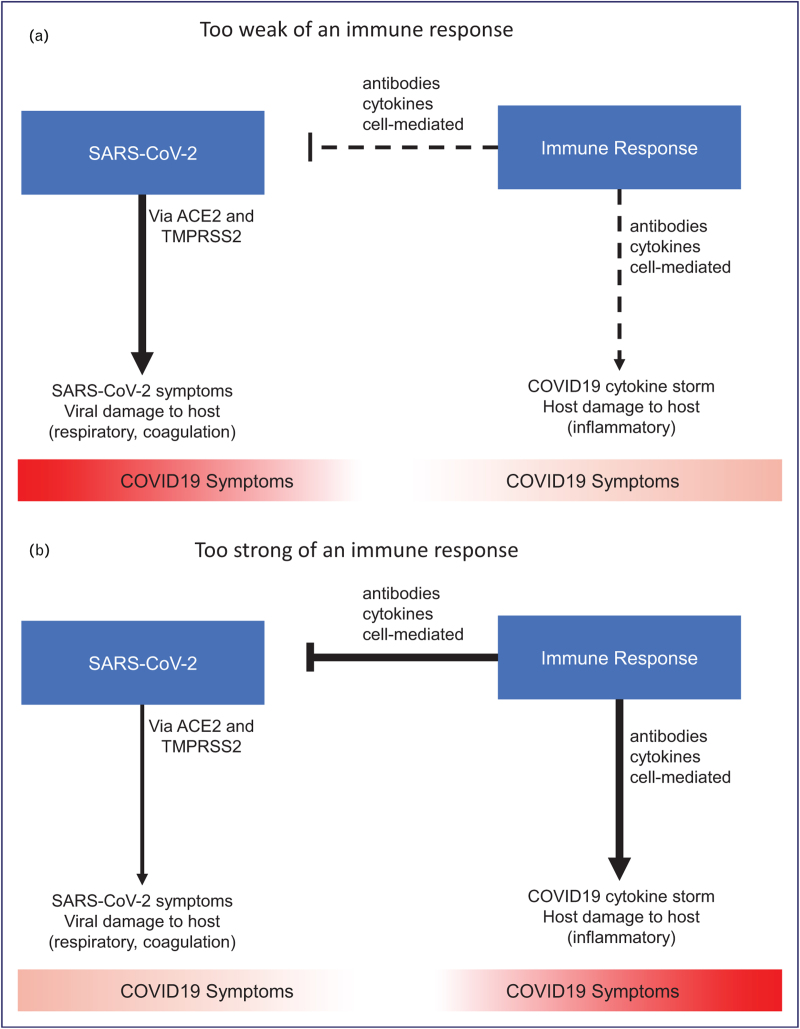FIGURE 1.
A framework for the heterogeneous host immune response in COVID-19. (A) In patients with too weak of an immune response, poorly controlled viral infection leads to direct SARS-CoV-2 related symptoms. (B) In patients with too strong of an immune response, viral damage is mitigated but antibodies, cytokines, and cell-mediated factors contribute to inflammatory symptoms. (C, D) The optimal response can require antivirals, neutralizing antibodies, and immune stimulants early in the disease course when patients may be mounting too weak of an immune response due to genetic factors or auto-antibodies against interferons. Alternatively, the optimal response may require antithrombotics and immunosuppressants late in the disease course when patients are mounting too strong of an immune response involving hyperinflammation and hypercoagulation. SARS-CoV-2, severe acute respiratory coronavirus 2.

